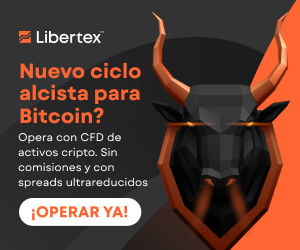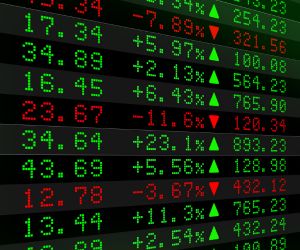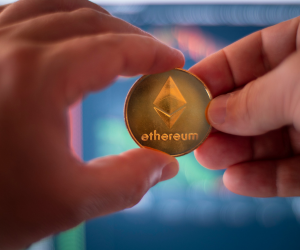Polkadot is a next-generation blockchain protocol that aims to connect multiple blockchains into a single network. Created by Dr. Gavin Wood, one of the co-founders of Ethereum, Polkadot was launched in 2020 and has quickly gained attention for its innovative approach to interoperability and scalability. So, is it a good investment? Are there potential drawbacks? What investment strategy should you use with this asset? This article will answer these questions and more.

How to Trade Polkadot
Polkadot has established itself as a popular and volatile asset, attracting both long-term investors and active traders. Trading Polkadot involves everything from buying the cryptocurrency (DOT) with the expectation that its price will increase over time, to using financial instruments to take advantage of short-term price fluctuations. Below, the alternatives for investing and trading Polkadot are described, including available markets (centralized and decentralized exchanges), general steps to start trading, long-term investment approaches versus active trading strategies, and key considerations for proper execution and tracking of trades.
Investment and Trading Alternatives in Polkadot
There are various ways to gain exposure to the price of Polkadot, each with its own characteristics and considerations:
Direct Purchase (Spot) and “HODL” Strategy: The simplest way to invest in Polkadot is by buying DOT through an exchange or broker and storing it in your own digital wallet. With this strategy, you own the underlying asset, so you must take care of the security of your private keys. Many investors opt for the “HODL” strategy, holding DOT long-term, trusting that its value will increase over time due to the interoperability and scalability offered by its network.
Active Trading of Polkadot: Involves frequently buying and selling DOT to capitalize on short- or medium-term price fluctuations. Active traders use technical analysis (charts, patterns, support and resistance levels, indicators like moving averages, RSI, and MACD) to determine entry and exit points. This approach requires dedication and strict risk management due to Polkadot’s high volatility.
Polkadot Derivatives (Futures, Options, CFD): Another alternative is trading financial derivatives whose value is based on the price of DOT, without needing to directly own the cryptocurrency. Contracts for Difference (CFD) allow opening long or short positions on Polkadot, with the possibility of using leverage, which can increase both gains and losses. Some platforms offer futures and options on DOT, enabling advanced strategies like hedging or speculative trading.
Indirect Financial Instruments (ETFs and Related Stocks): For those who prefer not to directly handle cryptocurrencies, products may arise that offer indirect exposure to Polkadot, such as ETFs that mirror the price of DOT or stocks of companies involved in the Polkadot ecosystem. These instruments allow benefiting from Polkadot's evolution without having to manage the custody of digital assets.
Markets for Trading Polkadot: Centralized vs. Decentralized Exchanges
The buying and selling of Polkadot is conducted on platforms known as exchanges (cryptocurrency trading platforms). Two main types are distinguished:
Centralized Exchanges (CEX): These are platforms managed by companies that act as intermediaries between DOT buyers and sellers. In these exchanges, users deposit funds in accounts controlled by the platform, which manages a central order book. Popular examples include Binance, Coinbase, and Kraken. These exchanges offer high liquidity and advanced tools, though they involve entrusting the custody of your assets to the platform.
Decentralized Exchanges (DEX) and P2P Markets: Allow direct trading between users without intermediaries holding the funds. On a DEX, each user maintains full control of their private keys and funds, while the platform facilitates the meeting of buy and sell orders through smart contracts. This method offers greater privacy and security, though generally has lower liquidity compared to centralized exchanges.
Additionally, Polkadot is also traded in OTC markets and through brokers offering CFDs on DOT. It is important to note that the Polkadot market operates globally 24/7, meaning its price can fluctuate at any time.
General Steps to Trade Polkadot
Effectively trading Polkadot requires following a series of carefully planned steps, from preparation and research to the execution and monitoring of trades, integrating risk management at every phase:
Research and Understand the Asset:
Learn about what Polkadot is and how its network functions, based on the Substrate protocol and its validation system. Investigate the factors influencing DOT’s price, such as network adoption for decentralized applications, staking, platform updates, and other relevant events. Understanding Polkadot’s volatility and fundamentals will help you make informed decisions.Define Your Style and Strategy:
Decide whether your approach will be long-term investing or active trading, or a combination of both. Establish a clear plan with entry and exit objectives, and determine the percentage of your capital to allocate for each trade to properly manage risk.Choose the Right Platform:
Select a reliable exchange or broker that allows you to trade DOT, whether centralized or decentralized. Consider the security, liquidity, fees, and user-friendliness of the platform. Set up security measures like strong passwords and two-factor authentication, and if you plan to hold your assets long-term, use a secure personal wallet.Analyze the Market and Decide Your Position:
Study the current market conditions for Polkadot using charts and technical indicators to identify trends and key levels. Based on your analysis, decide whether to take a long position (buy DOT expecting it to rise) or, if using derivatives, a short position (sell if you expect it to fall). Also, define the position size based on your capital and risk tolerance.Execute the Order and Set Protections:
Place the buy or sell order through the exchange, using market or limit orders according to your strategy. It's advisable to set stop-loss orders to limit losses and take-profit orders to secure gains once your objectives are met.Monitor and Manage the Trade:
Closely follow the progression of your position, adjusting stop and take-profit levels as prices move, and stay informed about relevant events in the Polkadot ecosystem. Keep a record of your trades to assess and adjust your strategy over time.Close or Adjust the Position:
When your profit targets are reached or if the market moves against you, close the position as planned. Discipline in closing trades is essential to protect your capital.
Approaches: Long-Term Investment vs. Active Trading
Long-Term Investment (Buy & Hold): Those betting on Polkadot long-term typically buy DOT and hold it for years, trusting that adoption and ecosystem growth will drive its value over time, despite short-term volatility.
Active Trading (Short/Medium Term): Active traders seek to profit from daily or weekly fluctuations in Polkadot, using technical analysis and strategies like day trading, swing trading, or trend trading, which requires strict risk management.
Key Considerations for Execution and Monitoring
When trading Polkadot, consider the following:
Risk Management: Set stop-loss limits on every trade and never invest more than you are willing to lose. Diversify your portfolio to avoid relying on a single asset.
Security of Funds: If trading on centralized exchanges, use security measures like two-factor authentication and consider transferring your DOT to a personal wallet for added protection.
Costs and Liquidity: Check the platform’s commissions and spreads. Exchanges with high liquidity will allow you to execute trades without significant slippage.
Discipline: Set clear rules for entering and exiting the market and adhere to your plan rigorously. Keep a record of your trades to learn and adjust your strategy.
Continuous Learning: Stay informed about developments in the Polkadot ecosystem and update your strategy as the market evolves.
SWOT Analysis of Polkadot (DOT) as an Investment
This SWOT analysis evaluates Polkadot, a blockchain platform that facilitates interoperability among various chains, examining the internal and external factors affecting its performance in the technology sector.
Strengths:
Advanced Interoperability: Polkadot enables communication between different blockchains, positioning it as a key solution for ecosystem integration.
Scalable Architecture: Its modular design facilitates the development and scalability of decentralized applications.
Expanding Community and Ecosystem: An active developer community supports continuous innovation and network adoption.
Weaknesses:
Technical Complexity: Implementing interoperability solutions can be complicated and require high levels of expertise.
Dependence on Ecosystem Adoption: Its success largely depends on the integration and adoption of multiple blockchains, which can be a slow process.
Opportunities:
Growth of the Blockchain Economy: The increasing demand for interoperable solutions in the DeFi and dApps sector can drive Polkadot's adoption.
Expansion in Global Markets: The need to integrate diverse blockchain ecosystems offers an opportunity to expand its user base worldwide.
Strategic Partnerships: Collaborating with emerging projects and platforms can strengthen its position and accelerate adoption.
Threats:
Interoperability Competition: Other platforms offering similar solutions can reduce its market share.
Regulatory Uncertainty: Changes in cryptocurrency regulation can impact the development and adoption of new technologies.
Technological Risks: Vulnerabilities or failures in integrating different blockchains can affect the platform's reliability.
What is a Crypto Trading Broker?
A broker is a crypto trading app, functioning as a digital platform accessible from both mobile devices and the web, allowing you to buy, sell, and manage cryptocurrencies. These applications act as intermediaries between you and the crypto markets, facilitating real-time trade execution while offering analysis and risk management tools.
Why do I need a Crypto Trading App?
Investing in cryptocurrencies requires access to up-to-date information, analysis tools, and the ability to execute trades swiftly. A crypto trading app brings together all these functionalities in one place, allowing you to seize market opportunities, manage your portfolio, and monitor your investments in real-time, in exchange for commissions or spreads per transaction.
Examples and Comparisons:
There are several globally recognized crypto trading apps such as Binance, Coinbase, Kraken, and for the Latin American market, Bitso stands out among others. Each offers particular features concerning interface, analysis tools, security options, and fee structures. Some are distinguished by providing an intuitive user experience and multilingual support, while others may offer more competitive operational costs or higher liquidity in certain markets.
Regulatory and Security Aspects
It's crucial that the crypto trading app you choose complies with the regulations of the country in which it operates or with international security standards. Many of these platforms are regulated by financial authorities and have advanced security protocols like two-factor authentication (2FA), cold storage for crypto assets, and data encryption, which provide you with greater confidence when investing.
How do Crypto Trading Apps "Connect" to Markets?
Through sophisticated technological platforms and agreements with liquidity providers, crypto trading apps facilitate the execution of buy and sell orders for cryptocurrencies. These applications connect to various exchanges and global markets, enabling trades to be carried out quickly and safely, and allowing you to track the real-time evolution of your investments.
In conclusion, a crypto trading app is your gateway to the dynamic world of cryptocurrencies, providing you with the tools, security, and access needed to operate in this global market.






